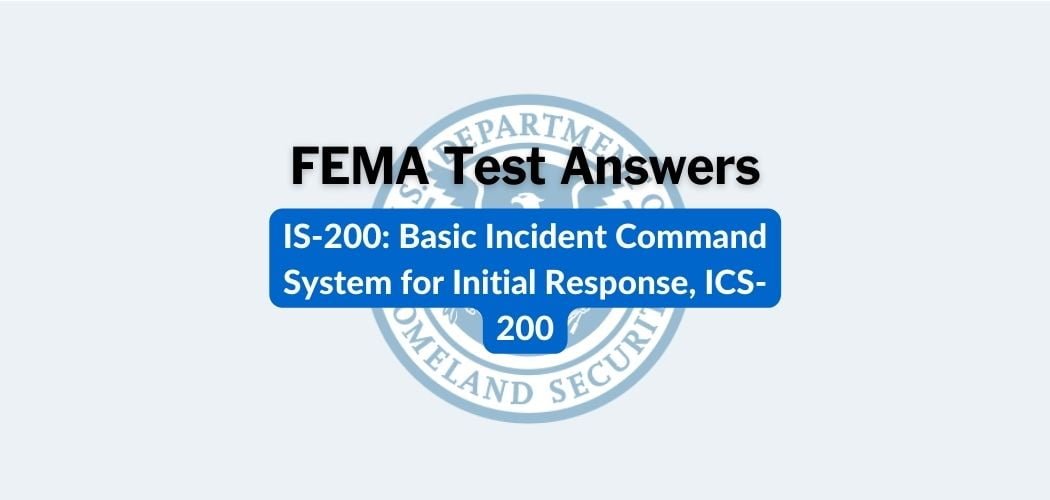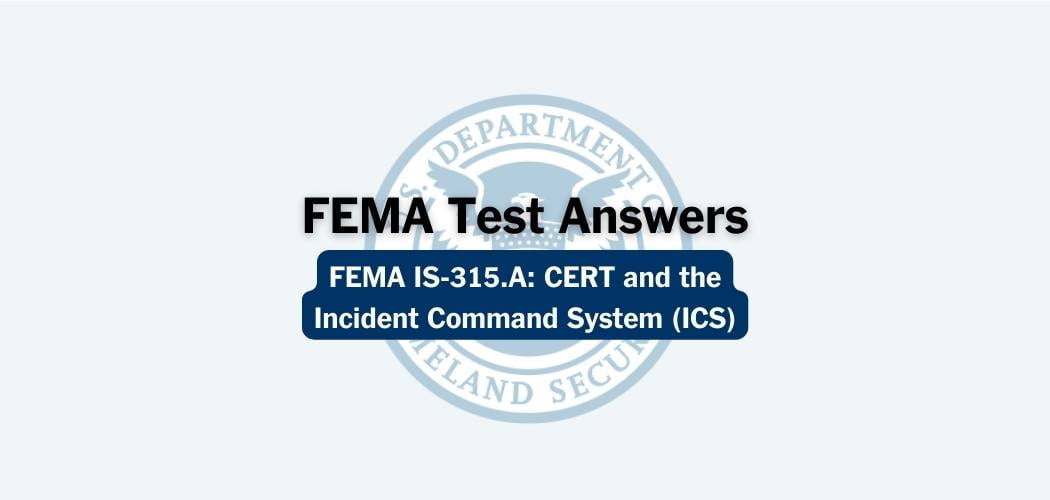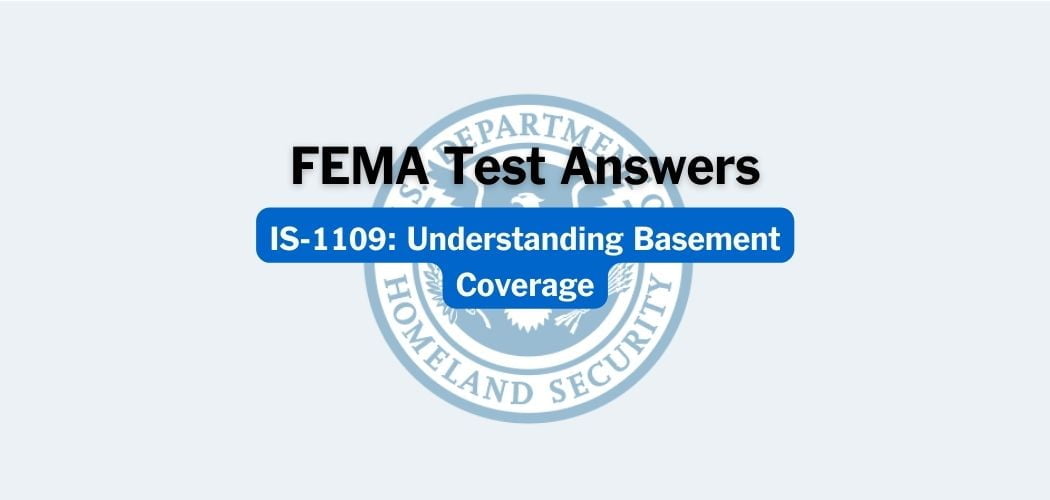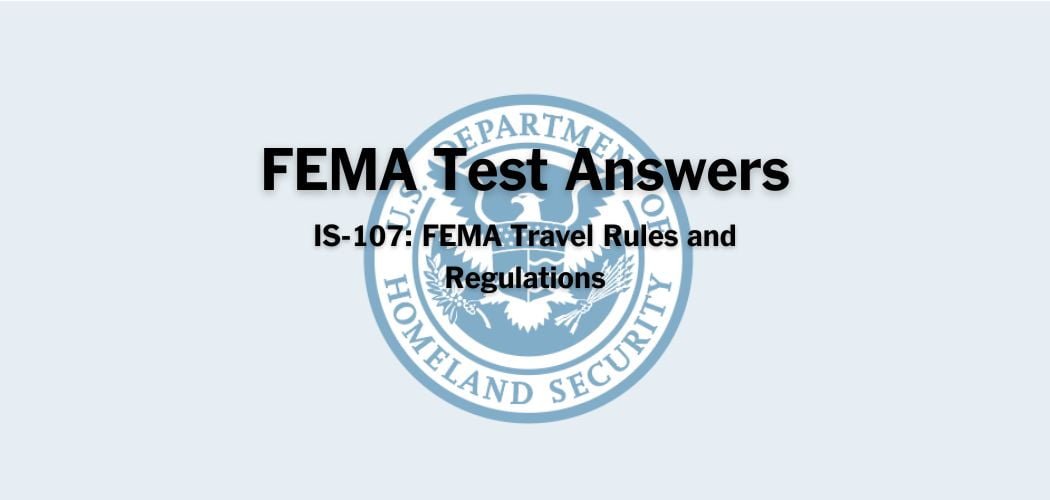Overview: FEMA IS-279.A course is designed to provide essential, nontechnical information about retrofitting existing flood-prone residential structures as presented in the third edition of FEMA P-259, Engineering Principles and Practices for Retrofitting Flood-Prone Residential Structures (FEMA 2012).
Primary audience: FEMA IS-279.A is for engineers and architects. Floodplain Managers and Building Code Officials are also encouraged to attend. Hazard Mitigation, Planning, Zoning, Public Works, and other building officials with building science knowledge and also those from the private sector, such as engineering firms, may also apply.
FEMA IS-279.A test answers
Question 1. What considerations are included in the Preliminary Floodproofing / Retrofitting Preference Matrix?
A. Risk, off-site flooding, and aesthetic concerns.✅
B. Aesthetic, high cost, and neighbors’ concerns.
C. Community, high cost, and aesthetic concerns.
D. Technological, risk, and code-required upgrade concerns.
Question 2. During the initial homeowner meeting, the designer ascertains the homeowner’s preferences, financial constraints, and any special needs.
A. TRUE✅
B. FALSE
Question 3. The Preliminary Floodproofing / Retrofitting Preference Matrix does the following:
A. Helps the designer document initial consultation with the homeowner.
B. Helps identify the appropriate retrofitting measures for further consideration.
C. Serves as the starting point for further analysis of potential retrofitting options.
D. All of the above.✅
Question 4. The designer should consider the type of material, resistance to flood damage, and type of construction when choosing a type of retrofitting activity.
A. TRUE✅
B. FALSE
Question 5. When water levels on the exterior of a building exceed water levels on the interior, hydrostatic loads become:
A. Balanced
B. Unbalanced✅
Question 6. Which of the following factors may influence the selection of retrofitting techniques?
A. Economics
B. Homeowner’s preferences
C. Flood characteristics
D. Building condition
E. All of the above✅
Question 7. Define base flood.
A. Flood having a 10 percent chance of being equaled or exceeded in any given year.
B. Flood having a 5 percent chance of being equaled or exceeded in any given year.
C. Flood having a 1 percent chance of being equaled or exceeded in any given year.✅
D. Flood having a 100 percent chance of being equaled or exceeded in any given year.
Question 8. FIRMs are based on a ________ engineering study of meteorological, hydrologic, hydraulic, and historic data and subsequent FIS.
A. detailed✅
B. simple
Question 9. Elevation techniques include:
A. Elevation on closed foundation systems
B. Elevation on open foundation systems
C. Elevation on fill
D. All of the above✅
Question 10. Relocation may be cost-prohibitive.
A. TRUE✅
B. FALSE
Question 11. A building’s finished floor elevation might influence potential retrofitting measures.
A. TRUE✅
B. FALSE
Question 12. National model building codes are I-Codes, IBC, IRC, IEBC, and NFPA.
A. TRUE✅
B. FALSE
Question 13. All HMA elevation, mitigation, reconstruction, and dry floodproofing projects must adhere to the maximum design standards of ASCE 24, Flood Resistant Design and Construction.
A. TRUE✅
B. FALSE
Question 14. The NFIP is a voluntary program.
A. TRUE✅
B. FALSE
Question 15. Requiring freeboard is one of the higher standards many States and communities can set in addition to those established by the NFIP.
A. TRUE✅
B. FALSE
Question 16. Individual jurisdictions may adopt standards that are _____ NFIP regulations.
A. more restrictive than✅
B. less restrictive than
C. equally as restrictive as
Question 17. Benefit-cost analysis is part one of the primary steps in the retrofitting process.
A. TRUE✅
B. FALSE
Question 18. When elevation and relocation are not feasible or practical, equipment may be able to be protected by:
A. Low floodwalls/shields✅
B. Anchors and tie-downs that prevent flotation
C. Backflow valves
D. All of the above
Question 19. Communities that participate in NFIP typically have FIS and FIRMS.
A. TRUE✅
B. FALSE
Question 20. On a riverine FIRM, the high-risk zone is:
A. Zone A✅
B. Zone D
C. Zone X (shaded and unshaded)
D. All of the above
Question 21. Non-flood-related hazards need to be evaluated as part of the determination of hazards.
A. TRUE✅
B. FALSE
Question 22. The key factors in determining hydrodynamic forces on a building are:
A. Floodwater velocity and flow directionality
B. Orientation of the building
C. Building geometry
D. Depth of floodwater
E. All of the above✅
Question 23. Wet floodproofing requires the use of flood-resistant materials.
A. TRUE✅
B. FALSE
Question 24. Before assessing homeowner concerns on the Preliminary Floodproofing / Retrofitting Preference Matrix, why might some measures be automatically excluded from consideration?
A. They are not allowed per local regulatory requirements
B. They are outdated
C. The homeowner has concerns about them✅
D. None of the above
Question 25. Special needs that should be discussed with the homeowner and may influence the selection of retrofitting techniques include:
A. Accessibility
B. Aesthetics
C. Economics
D. Risks
E. All of the above✅
Question 26. The Geotechnical Considerations Decision Matrix can help identify situations in which _____ conditions are not suitable for certain retrofitting options.
A. water
B. soil✅
C. air
Question 27. Proper design and anchoring of the foundation are included in the design of a home for seismic loads.
A. TRUE✅
B. FALSE
Question 28. Localized erosion caused by the loss of soil or sediment around flow obstructions.
A. Backfill
B. Permeability
C. Scour✅
Question 29. Successful completion of a retrofitting project requires only one coordination meeting with a homeowner and designer.
A. TRUE
B. FALSE✅
Question 30. To participate in the NFIP, communities must regulate development in floodplains in accordance with the NFIP and _____ regulations.
A. State✅
B. City
C. County



